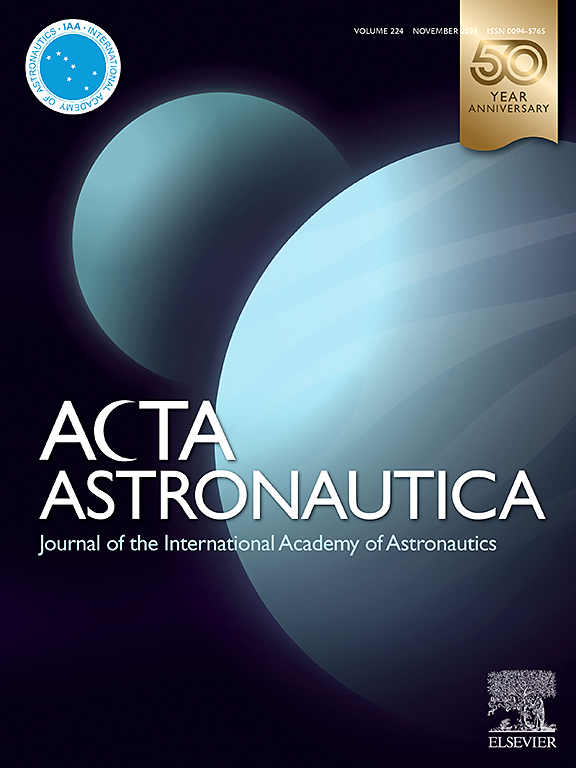Stable and sustainable orbital capacity solutions in Low Earth Orbit
IF 3.1
2区 物理与天体物理
Q1 ENGINEERING, AEROSPACE
引用次数: 0
Abstract
The significant increase in the population of satellites in Low Earth Orbit raises concerns about the orbital carrying capacity, essentially the ability of the Low Earth Orbit environment to sustain a certain number of satellites without unsustainable levels of risk due to space debris or collisions. More in-orbit collisions can generate debris that further threatens operational satellites and human spaceflight missions. The open-source MIT Orbital Capacity Assessment Tool is adopted to optimize the number of satellites that fit in the Low Earth Orbit region under dynamical system equilibrium and sustainability constraints. The results show an opposite trend between active satellites and debris for a sustainable centuries-long space environment: the number of active satellites decreases with altitude, while the amount of debris increases. Higher altitudes exhibit a greater sensitivity to the number of satellites they can accommodate. Even a small number of satellites at high altitudes can significantly reduce the equilibrium orbital capacity of the space environment. Our results provide a stable upper boundary for the Low Earth Orbit carrying capacity, supported by a first-ever comparison and validation analysis between a source–sink model of the space environment population, incorporating a novel debris creation and spreading function, with Monte-Carlo methods.
低地球轨道稳定和可持续的轨道容量解决方案
近地轨道卫星数量的显著增加引起了人们对轨道运载能力的关注,主要是指近地轨道环境维持一定数量的卫星而不因空间碎片或碰撞而产生不可持续风险的能力。更多的在轨碰撞可能产生碎片,进一步威胁到运行中的卫星和人类太空飞行任务。采用开源的MIT轨道容量评估工具,在动力系统平衡和可持续性约束下对低地球轨道区域的卫星数量进行优化。结果表明,在一个可持续的长达几个世纪的空间环境中,活动卫星和碎片之间的趋势相反:活动卫星的数量随着高度的增加而减少,而碎片的数量则增加。海拔越高,对所能容纳的卫星数量越敏感。即使少量的高海拔卫星也会大大降低空间环境的平衡轨道容量。我们的研究结果为低地球轨道承载能力提供了一个稳定的上限,并得到了空间环境种群源汇模型之间的首次比较和验证分析的支持,该模型结合了新的碎片产生和扩散函数,并采用蒙特卡罗方法。
本文章由计算机程序翻译,如有差异,请以英文原文为准。
求助全文
约1分钟内获得全文
求助全文
来源期刊

Acta Astronautica
工程技术-工程:宇航
CiteScore
7.20
自引率
22.90%
发文量
599
审稿时长
53 days
期刊介绍:
Acta Astronautica is sponsored by the International Academy of Astronautics. Content is based on original contributions in all fields of basic, engineering, life and social space sciences and of space technology related to:
The peaceful scientific exploration of space,
Its exploitation for human welfare and progress,
Conception, design, development and operation of space-borne and Earth-based systems,
In addition to regular issues, the journal publishes selected proceedings of the annual International Astronautical Congress (IAC), transactions of the IAA and special issues on topics of current interest, such as microgravity, space station technology, geostationary orbits, and space economics. Other subject areas include satellite technology, space transportation and communications, space energy, power and propulsion, astrodynamics, extraterrestrial intelligence and Earth observations.
 求助内容:
求助内容: 应助结果提醒方式:
应助结果提醒方式:


